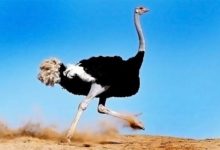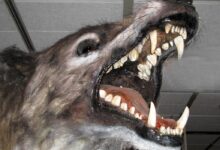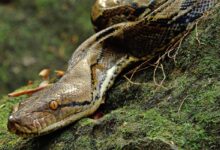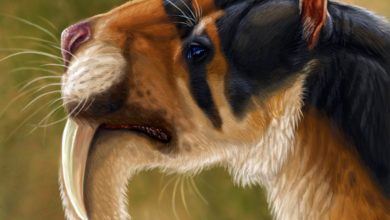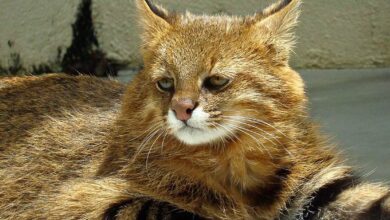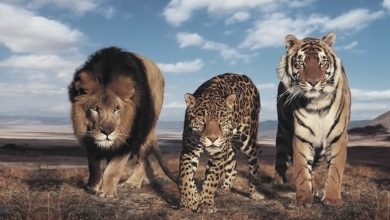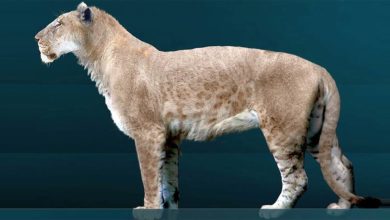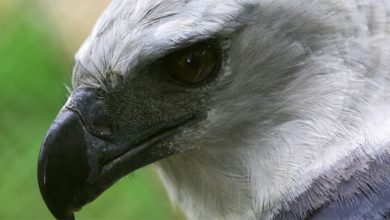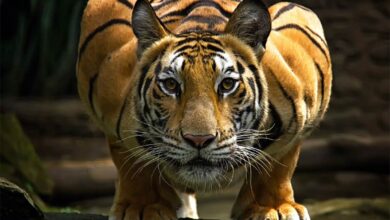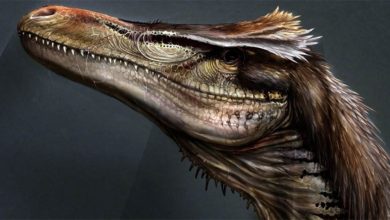Elephant birds – Madagascar giants
Elephant birds (Aepyornithidae)
Besides moas, elephant birds are the largest birds ever to have lived on Earth. For millions of years they lived calm lives on the Madagascar until the humans arrived at the island. Elephant birds just as moa birds became extinct as a result of only several hundred years of human activity. They are a mysterious flightless bird family, which eggs are still being found on the island. The most interesting finds instantly become a special treat for wealthy enthusiasts of prehistoric times.
Classification
- Kingdom: Animalia
- Phylum: Chordata
- Clade: Dinosauria
- Class: Aves
- Clade: Novaeratitae
- Order: †Aepyornithiformes
- Family: †Aepyornithidae
There are 2 genera in this family: Aepyornis and Mullerornis
Aepyornis:
- Aepyornis maximus, subspecies: Aepyornis ingens, Aepyornis modestus, Aepyornis titan
- Aepyornis medius, subspecies: Aepyornis cursor, Aepyornis grandidieri, Aepyornis lentus
- Aepyornis hildebrandti, subspecies: Aepyornis mulleri
- Aepyornis gracilis
Mullerornis:
- Mullerornis agilis
- Mullerornis betsilei
- Mullerornis rudis, subspecies: Flacourtia rudis
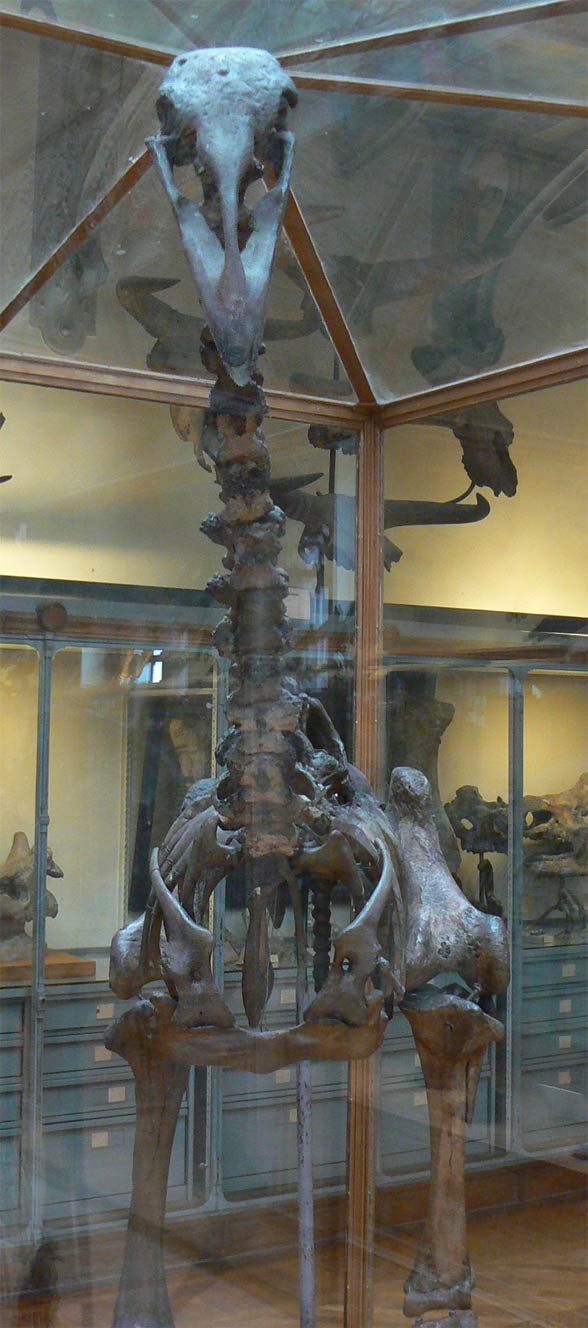
Name
The Greek name of the elephant birds – Aepyornis – can be roughly translated to: ‘a tall bird’.
Range
These enormous ratites lived in the forest of Madagascar. Conceivably they died out in the 17th century. A French governor of Madagascar, Étienne de Flacourt which lived on the island between 1648 and 1655 mentioned that at that time elephant birds could still be observed in unpopulated areas. A great voyager and discoverer, Marco Polo, which sailed the world in 12th and 13th century, also wrote about giant birds he encountered in this exotic state.
Characteristics
The largest bird in the whole family was Aepyornis maximus, a type species of Aepyornithidae.
It was this species that was an archetype of Roc, a creature from Persian mythology (alternatively rukh or rok, depending on the source), which was described by Marco Polo in 13th century as a part of a Persian legend about a bird as strong as an eagle which could, supposedly, ‘grab an elephant with its talons’.
Enormous eggs found by sailors could be misinterpreted as a ‘work’ of Madagascan fish eagle, which could grab sizeable mammals, e.g. modern lemurs.
The Aepyornis genus flightless birds were gigantic, they were about 3 m (10 ft) tall, weighing almost half a ton (the largest birds could weigh up to 450 kg (992 lb) or maybe even 500 kg (1102 lb). Birds of the Mullerornis genus were much smaller.
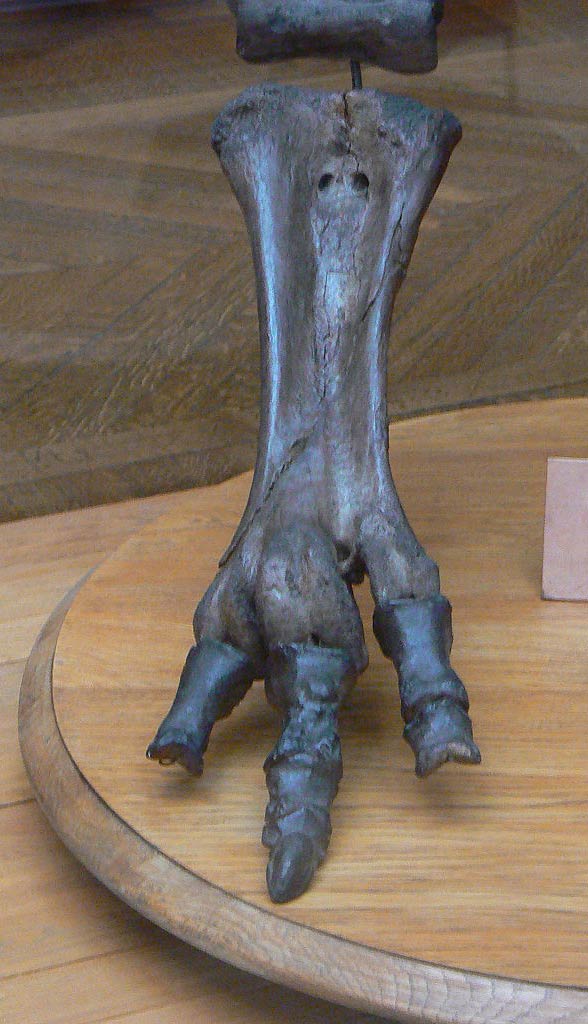
Eggs – size record
Based on found egg fragments the eggs are estimated to be about 34 cm (13.4 in) long with a circumference of almost 1 meter (3.3 ft) and weight of 10 kg (22 lb). Therefore such an egg had a volume of almost 160 hen eggs.
Elephant birds were one of the largest birds in the history of the world; same as ostriches, emus, rheas, cassowaries, kiwis and moas, they could not fly.
Conceivably the elephant birds, contrary to modern ostriches, could not reach very high speeds.
They were distinctive for their massive legs and great claws, vestigial wings and a long, strong neck. Their bodies were covered with feathers that resembled hair (like emus), while their beak was chisel-shaped. In their times of prosperity they ruled in their habitats for 60 million years.
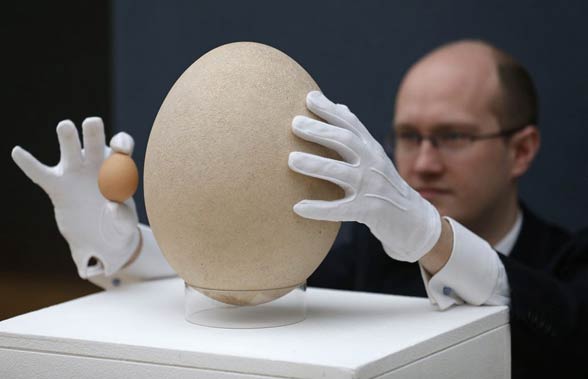
Island’s largest animals
Despite a sinister appearance, which gave birth to the Roc creature, they were strictly herbivorous. They did not have to fear other Madagascan animals, as they were protected by mere body size, which scared off potential attackers. However if an intruder decided to attack, the bird defended itself with powerful kicks and its sharp beak.
They had a physique similar to modern ostriches: they had a stocky, large torso with a small head, accompanied by vestigial wings and long, athletic legs.
Though as we mentioned above, the largest elephant birds could weigh even 455 kg (1003 lb) being 3 meters tall (9.8 ft), the South Island giant moa, although more frailly built, could grow even taller than that.
The fact that elephant birds survived 60 million years and adapted to the new conditions throughout centuries tells us how very effective and interesting animals they were. However, their adaptive skills proved successful only in habitats lacking predators. The aggressive and expansive European settlers became awfully effective predators that led these birds to a grim end…
Possibly even native Madagascan tribes often hunted for these giant flightless birds about 1000 – 2000 years before the arrival of Europeans. Anyhow today it is hard to establish the main reason for their extinction, yet the most possible scenario is that humans played a vital role in the process.

Diet
As there are no fossils suggesting whether there were tropical rainforests on Madagascar, we do not know for certain if those species were adapted to living in thick forest formations to such a degree the modern cassowaries are, in Australia or New Guinea. Nevertheless some fruits containing a very thick and woody endocarp (the inner part of the fruit), as the endangered forest coconut (Voanioala gerardii) could be eaten by elephant birds, as well as some palm fruits, including Ravenea louvelii and Satranala decussilvae.
Perhaps the elephant birds in their ecosystems had a similar role to the abovementioned cassowaries – they could spread the seeds of rare and important trees, preventing their extinction.
Eggs
Over the years several unimpaired elephant bird eggs were found. One is currently in possession of the National Geographic Society in Washington DC. The egg was a gift from Luis Marden in 1967. This specimen is unique as there is a skeleton of an unhatched bird inside the egg.
Denver Nature and Science Museum (Colorado) is in possession of two intact elephant bird eggs, one of which is a part of an exhibition. Another one is exhibited in the Harvard Natural History Museum in Cambridge, while their casts are currently in the Grant Museum of Zoology by the University of London.
The famous traveler and naturalist Sir David Frederick Attenborough is the owner of an almost completely preserved egg shell from 7th/8th century, which he assembled from the fragments of found in the 60s in collaboration with BBC, shooting a documentary ‘Zoo Quest’ in the episode ‘To Madagascar’.
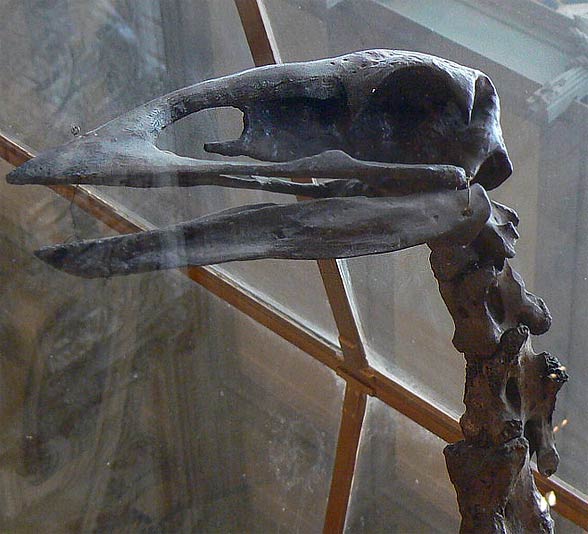
In March 2011 BBC emitted a 60-minute documentary ‘Attenborough and the Giant Egg’, in which the naturalist describes his personal searches and discovered mysteries of elephant birds and their eggs.
There are also undamaged eggs that were compared to other birds` eggs, including hummingbird during an exhibition in the Natural History Museum near Delaware (USA). Another such exhibition may be seen in the London Natural History Museum.
The Melbourne Museum in Australia has two Aepyornis elephant bird eggs. One of them was purchased for 100 dollars by professor Frederick McCoy in June 1862 and to this day it is one of few intact eggs. In the 50s it was subject of a radiological examination, which however did not indicate the presence of embryo. The second egg was bought years later.
WFVZ, the Western Foundation of Vertebrate Zoology currently holds the world`s largest collection of bird eggs, including 7 elephant bird eggs of the Aepyornis genus.
In May 2013 one of the eggs was sold in London for 66 675 pounds, which was roughly 101 813 dollars. The estimates before the auction claimed that the specimen would achieve a bidding price higher than 45 000 dollars.

Extinction
It is commonly believed that the extinction of elephant birds was a result of human activity. In the distant past these birds were a common species, inhabiting as well north as south parts of Madagascar.
One of the theories claims that humans hunted for them, leading to extinction on a large area and, which also is substantial, in a very short period, which is intertwined with the Quaternary extinction theory, being a result of human hunts.
We deal with numerous indications confirming such a theory. It has been settled that not the adult birds, but rather the eggs were more threatened. The most recent searches have revealed pieces of egg shell among remains after a human-set fire. This might suggest that eggs were an important part of the island`s inhabitants at that time.
We do not know an exact date of extinction, as many reports about these giant birds` presence is based on myths and legends. Nonetheless archeologists have found bones dating back to 1880, bearing slaughtering marks, yet the youngest egg dates back to… 10th century.
An alternative theory claims that the extinction process was just a derivative of human activity, as settlers brought hens and guineafowl to the island. The remains of domesticated birds were found on Madagascar in same regions the elephant birds` remains were found.

Detailed characteristic / size
Elephant birds (Aepyornithidae)
- Height: 90 – 300 cm (3 – 9.8 ft)
- Weight: 380 – 400 kg (838 – 882 lb), heaviest: 455 kg – 500 kg (1003 – 1102 lb)
- Eggs:
- length: up to 34 cm (13 in)
- weight: 10 kg (22 lb)
- circumference: 1 meter (3.3 ft)
- Volume: to 2 liters (0.5 gal), 160 times larger than a chicken egg
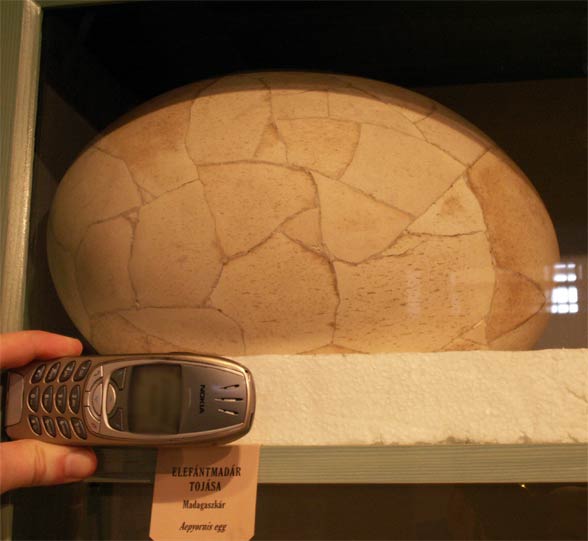
Elephant birds (Aepyornithidae) – interesting facts
- The egg of the largest elephant birds could contain 2 liters (0.5 gal) of water. This means that they were 3 times larger than the largest dinosaur eggs.
- Fossilized elephant bird eggs may still be found today on Madagascar.
- Some researchers believe that there were at least 4 species of the elephant bird, others suspect that every specimen was in fact one species: Aepyornis maximus.
- Alleged remains of elephant bird eggs found on Canary Islands are a serious biogeographical puzzle. It is believed that these islands were no longer connected with Africa when the world was home of giant flightless birds. Additionally nothing indicates that these birds evolved anywhere beyond Madagascar, so it has been settled that the fossils found on Canary Islands are remains of extinct North African birds, which could also be ratites (e.g. Eremopezus) or even remains of the prehistoric massive marine birds from the Pelagornithidae
- Dromornis from Australia, were similar size like elephants birds – up to 3 metres (9.8 ft) height and weight up to 500 kg (1102 lb).

Recommended
- Extinct animals
- Moa
- Haast’s eagle
- Indricotherium
- Mammoths
- Elasmotherium
- Archaeopteryx
- Sarcosuchus
- Deinosuschus
- Largest eagles Top10
- Largest birds of prey Top10
- Animals & dinosaurs records
- The fastest animals – Top 100
- The fastest birds – Top 10
- The heaviest dinosaurs – Top 10
- The longest dinosaurs. Sauropods Top 10
- The longest predatory dinosaurs. Theropods Top 10
- The heavies predatory dinosaurs Top 10
- The longest and largest ornithopods
- The longest and largest ceratopsians
- The shortest sauropods
- The smallest dinosaurs – Top 10


